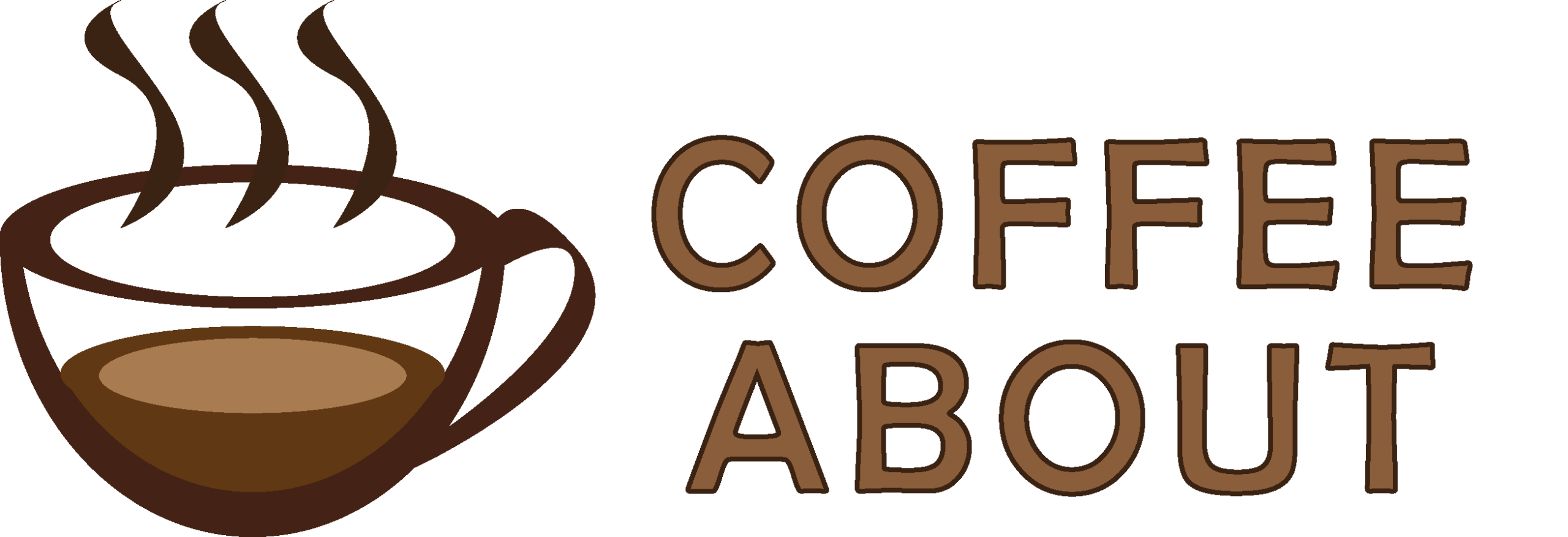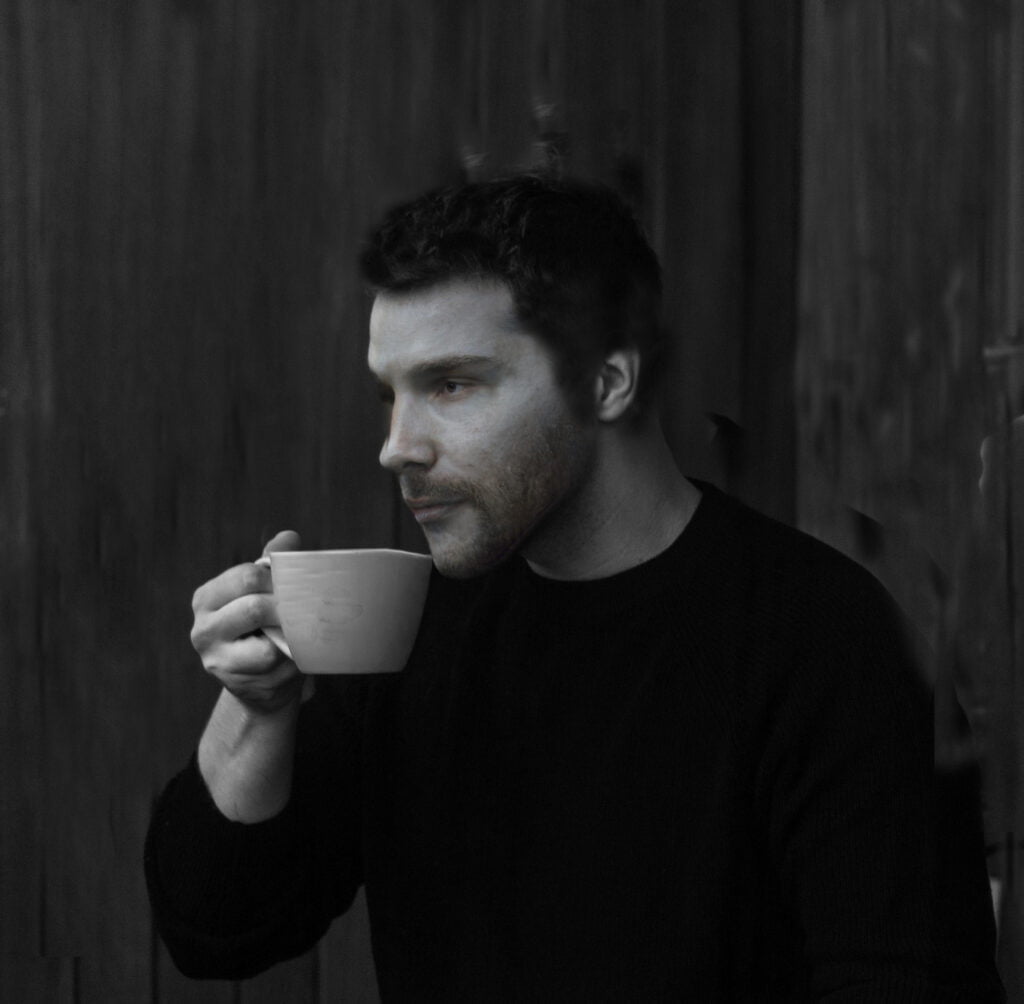The main difference between Ristretto and Espresso is the coffee-to-water ratio. Espresso is made using a ratio of 1:2, which gives a balanced taste. And Ristretto uses a ratio of 1:1, meaning very little water is used to create a shot. This makes the coffee more intense and syrupy in flavor.
If you love the syrupy texture and intense coffee notes, the ristretto’s concentrated brew really allows them to shine.
But if you love a more rounded, smooth espresso experience, the classic shot is a better choice.
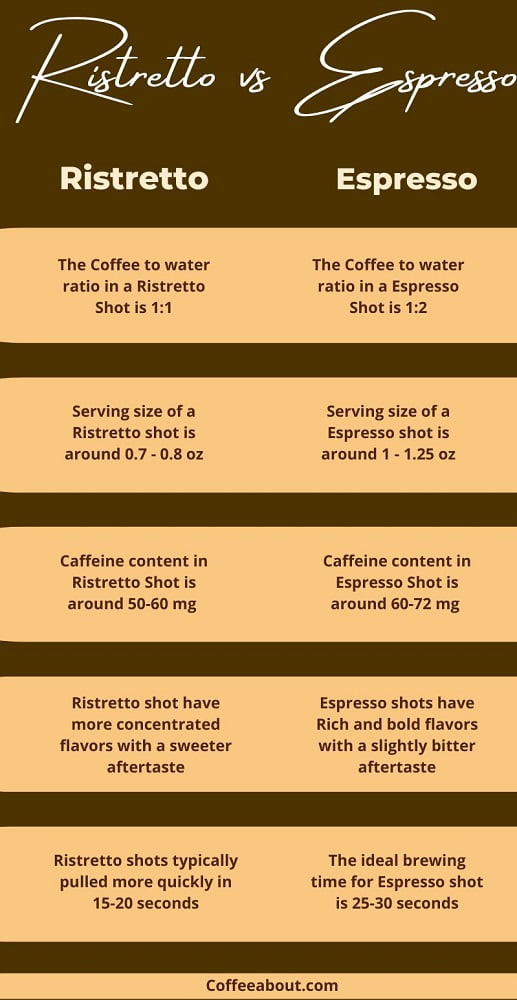
What is Ristretto Shot
The Ristretto shot is a highly concentrated espresso prepared by reducing the water content to half while using the same amount of coffee grounds as regular Espresso. Typically, a Ristretto yields 15-20 mL (0.5-0.7 ounces) shot and has a coffee-to-water ratio of 1:1.
Ristretto is essentially a shorter cousin of Espresso!
Think of it like an Espresso on steroids – it’s stronger, thicker, and has a unique sweetness that you won’t find in any other coffee.
If you’re ready to take your coffee game to the next level, try Ristretto shot. I am sure you’ll like it!
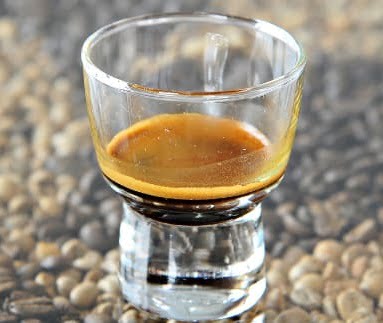
What is Espresso Shot
An espresso is a standard 1-1.25 oz shot pulled by forcing hot water through 7-9 grams of finely ground coffee beans using an espresso machine. It has a rich, bold taste and beautiful crema on top.
Espresso is also a versatile drink – it can be enjoyed on its own or used as the base for a wide range of coffee-based drinks like lattes, cappuccinos, and more. It’s no wonder why Espresso is a staple in cafes worldwide and a favorite of coffee lovers everywhere.
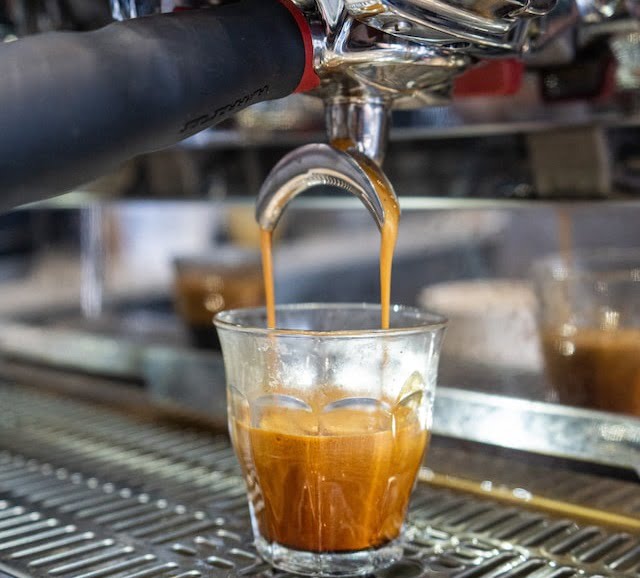
Read about 30 different types of Espresso drinks
The Difference in Taste of Ristretto vs Espresso
Ristretto shots have a stronger and more condensed coffee taste compared to regular espresso. Ristretto also tastes sweeter as the short pulling period leaves bitter flavors unextracted.
The flavor profile of Ristretto is not very balanced and has more pronounced notes of chocolate, caramel, and nuts but lacks the complexity of coffee. It has a thicker, syrupier body and texture compared to a standard espresso.
People drink Ristretto to enjoy a richer mouthfeel and avoid bitter flavors.
A classic espresso, on the other hand, has a more balanced, rounded flavor profile. The flavor profile is still very intense and syrupy, but not quite as intense as a ristretto. You get a smoother blend of bitterness, acidity, and sweetness.
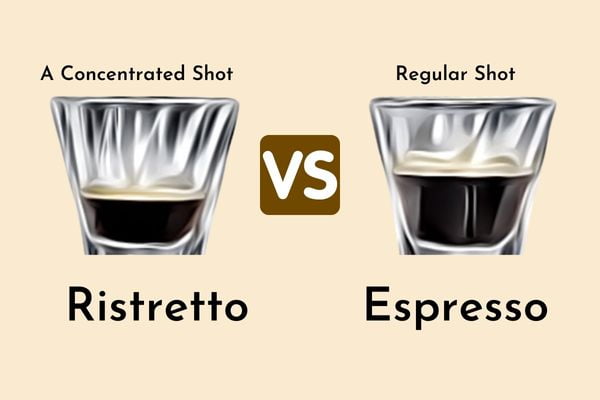
The Difference in Caffeine Content
The caffeine content in both the Espresso and Ristretto shots is more or less the same.
This is because the caffeine in coffee is extracted early in the brewing process, and both Ristretto and Espresso use the same amount of coffee grounds.
A serving of espresso has around 60-72 mg of caffeine, while a serving of ristretto has around 50-60 mg.
However, because Ristretto is a smaller and more concentrated shot, it might feel like it has more caffeine.
The Difference in Brewing technique and Extraction time
The Brewing technique for both the Ristretto and Espresso shots is exactly the same. The grind size of Coffee grounds is almost the same, tamping is the same, but there is a difference in the extraction time.
Typically the best Espresso shots are pulled in the range of 25 – 30 seconds. And for the Ristretto shots, the extraction time is restricted to around 20 seconds.
During the extraction of coffee beans, fruity and citrus flavors are extracted first, then smooth and mellow flavors, and finally the bitter and chocolaty flavors.
For Ristretto shots, it is better to use ultra-fine coffee grounds (1-2 points more fine then you typically use for standard Espresso) so that the flavors get extracted properly during the short brewing time.
You can easily pull Ristretto shots in semi-automatic Espresso machines by restricting the volume of the shot.
Ristretto is a shorter shot, typically 0.5-0.7 ounces, while Espresso is a bit longer, usually between 1-1.25 ounces for a solo shot and 2-2.25 oz for a doppio shot.
What makes better milk milk-based drinks?
Regarding milk-based drinks, both Ristretto and Espresso can make excellent bases. Still, it all depends on your personal taste preferences.
Espresso is a classic choice for popular milk-based drinks like lattes and cappuccinos. It adds a well-balanced coffee flavor to the beverages. The bitter flavors of Espresso can cut through the milk, resulting in a more nuanced flavor profile.
Ristretto shot also makes a delicious base for milky coffee drinks especially if you don’t want to use a lot of water and dilute your beverages. It’s full-bodied and syrupy, so it’ll give your drink a thicker texture.
The Piccolo Coffee is a rising star in the specialty coffee scene. It is a shorter cousin of the Latte, made with Ristretto shots instead of full Espresso shots.
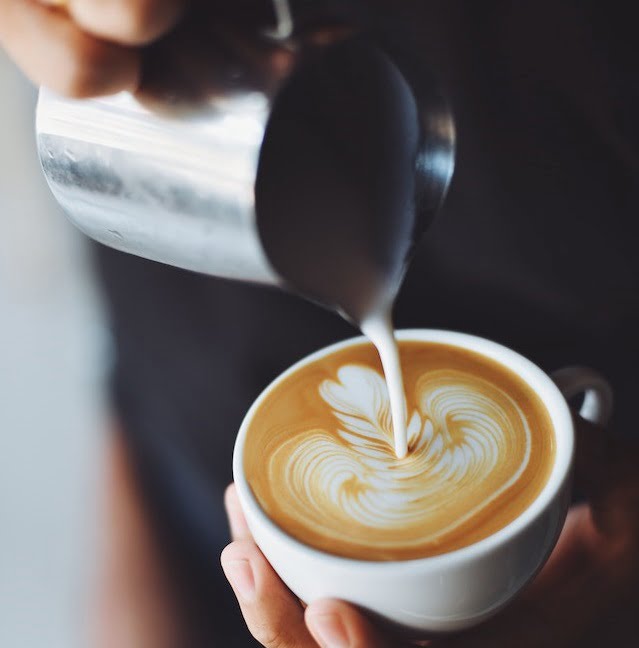
What is Lungo? The Third Espresso Variation
“Lungo” means “Long” in Italian and is essentially an espresso shot that is brewed longer and with more water. Lungo shots are around 2-3 oz and are often pulled for 40 seconds, which is twice as long as a traditional espresso shot.
In terms of flavor profile, a lungo has a lighter body with more diluted and bitter flavors than a classic espresso and ristretto.
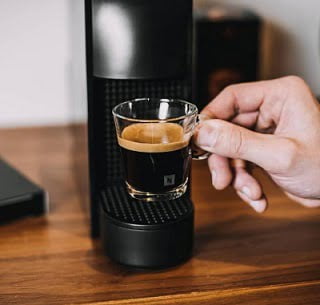
Final Thoughts | So What’s Better
And there you have it – all the key differences between ristretto shots and standard espresso.
While ristretto fans love the syrupy and concentrated flavors, I’m still partial to a classic espresso. I find that the standard pull perfectly balances the natural acidity and bitterness of the beans in a really nice way.
But I’d love to hear your thoughts! Which do you prefer, ristretto or espresso? Let me know in the comments!
FAQs
Can you order a ristretto at Starbucks?
Yes, you can order a ristretto shot at Starbucks.
While ristretto shots aren’t listed specifically on Starbucks’ menu, you can customize any espresso-based drink and ask for it made with ristretto shots instead of regular espresso shots.
Is a flat white made with ristretto?
While some coffee shops prepare Flat white with Ristretto shots, a traditional flat white is made with regular espresso shots.
The defining feature of a flat white is the use of microfoam milk and a thin layer of foam on top.
Also Read Other Espresso Comparisons
